elemintalshop
Dabotap Pagoda 10 Won South Korea Authentic Coin Money for Jewelry and Craft Making (Dabo Buddha)
Dabotap Pagoda 10 Won South Korea Authentic Coin Money for Jewelry and Craft Making (Dabo Buddha)
Couldn't load pickup availability
Dabotap Pagoda 10 Won South Korea Authentic Coin Money for Jewelry and Craft Making (Dabo Buddha)
Obverse: Dabotap Pagoda, located in Gyeongju, one of the national treasures of South Korea, dividing the value in Hangul on both sides
Lettering: 십 원
Translation: Ten Won
Reverse: Value in numerals in the center with "Bank of Korea" in Hangul below and the date above
Lettering: 2007 10 한국은행
Translation: Bank of Korea
Features
Issuer South Korea
Period Republic (1948-date)
Type Standard circulation coin
Years 2006-2019
Value 10 Won
10 KRW = 0.0085 USD
Currency New won (1962-date)
Composition Copper clad aluminium
Weight 1.22 g
Diameter 18 mm
Thickness 1.2 mm
Shape Round
Orientation Coin alignment ↑↓
Number N# 1654
References KM# 103, Schön# 163
Wikipedia:
Dabo Pagoda, also known as pagoda of many treasures, is located in the temple of Bulguksa in Gyeongju, South Korea. From entering the temple through the Cheongun and Baegun Bridge, Dabotap is located on the right side, opposing Seokgatap on the left side. The pagoda is supposed to have been built in 751, the 10th year of the Shilla king Gyeongdeok. It is currently designated as National Treasure no. 20.
The 3 story pagoda stands 10.29 metres tall and was built in an ornate style not seen in other Buddhist countries. The sculpture techniques used are unique for its time and include delicate features.
It has a staircase on each of the four sides. Four stone square pillars support the pagoda's first roof, where is built a square stone railing. Inside the railing is the body of the pagoda, and above it, standing on the second octagonal-shaped roof surrounded by an octagonal stone railing, are eight bamboo-shaped stone pillars support the octagonal-shaped lotus stone carved with sixteen petals. Above it eight stone pillars support the third octagonal-shaped roof. Of the four stone lions guarding the top of the staircases only one remain. A second one is located at the British Museum in London. As for the whereabouts of the other two, they are still unknown. The pagoda was dismantled by the Japanese in the 1920s but there is no evidence of any relics found in the pagoda.
The pagoda is currently depicted on the obverse of the 10 won coin.
Dabotap and Seokgatap
The two pagodas reflect a story in the Lotus sutra. Dabo (Prabhutaratna), a Buddha who had already achieved enlightenment, riding the Tower of Many Treasures, appeared to attest to the validity of Sakyamuni's sermons at Vulture Peak. Dabo and Sakyamuni then sat side by side within the tower. This pagoda represents the Dabo Buddha, while the other pagoda represents Sakyamuni. Dabo represents the objective truth, while Sakyamuni represents the subjective wisdom to realize it. Dabotap is highly decorative and looks feminine, whereas Seokgatap is highly simplified and looks more masculine. The sophisticated Dabotap symbolizes the complexity of the world; the simple Seokgatap represents the brevity of spiritual ascent. (from Fascinating Tales of Blooming Silla by Alexander Chang and Andrew Chang, 2006).
Share
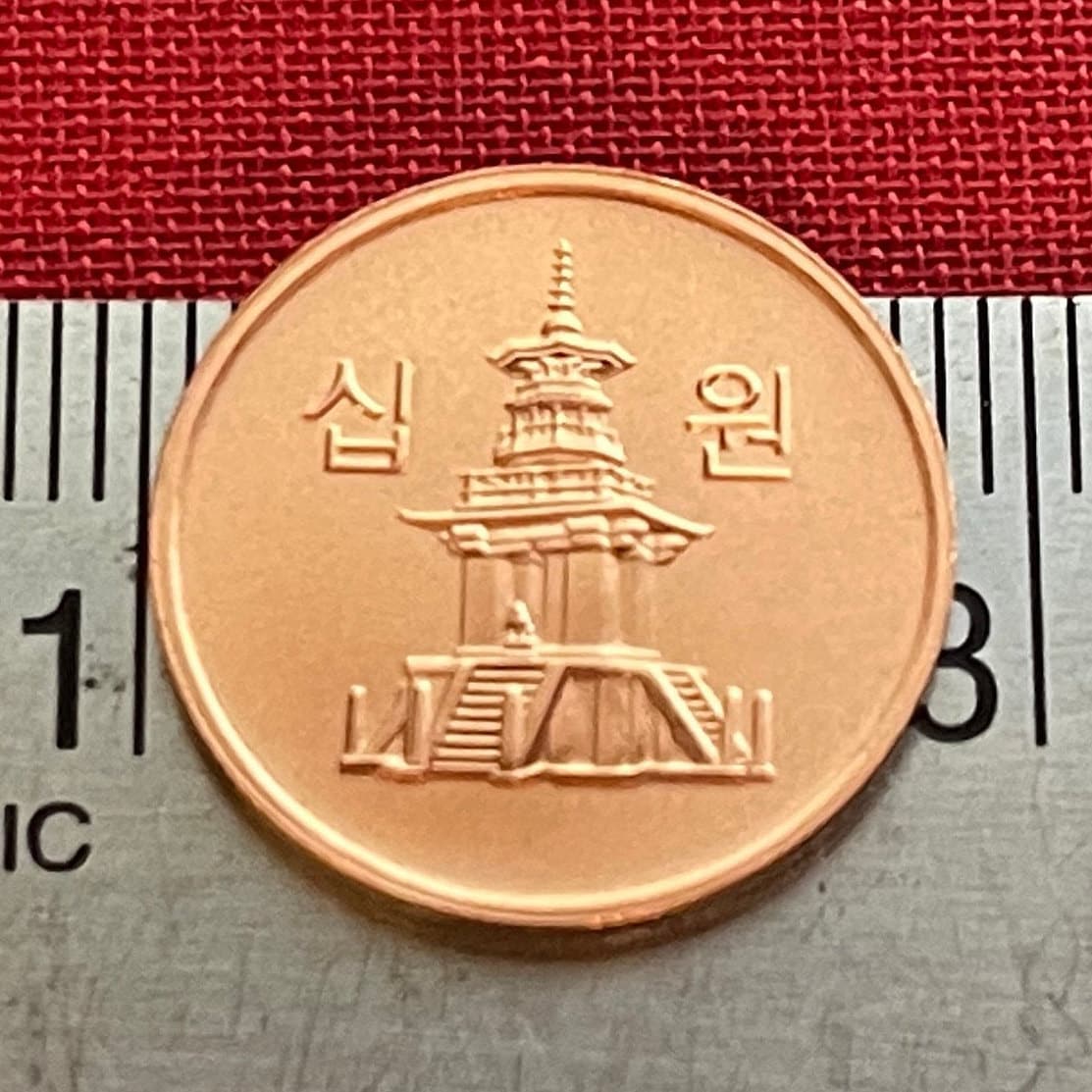
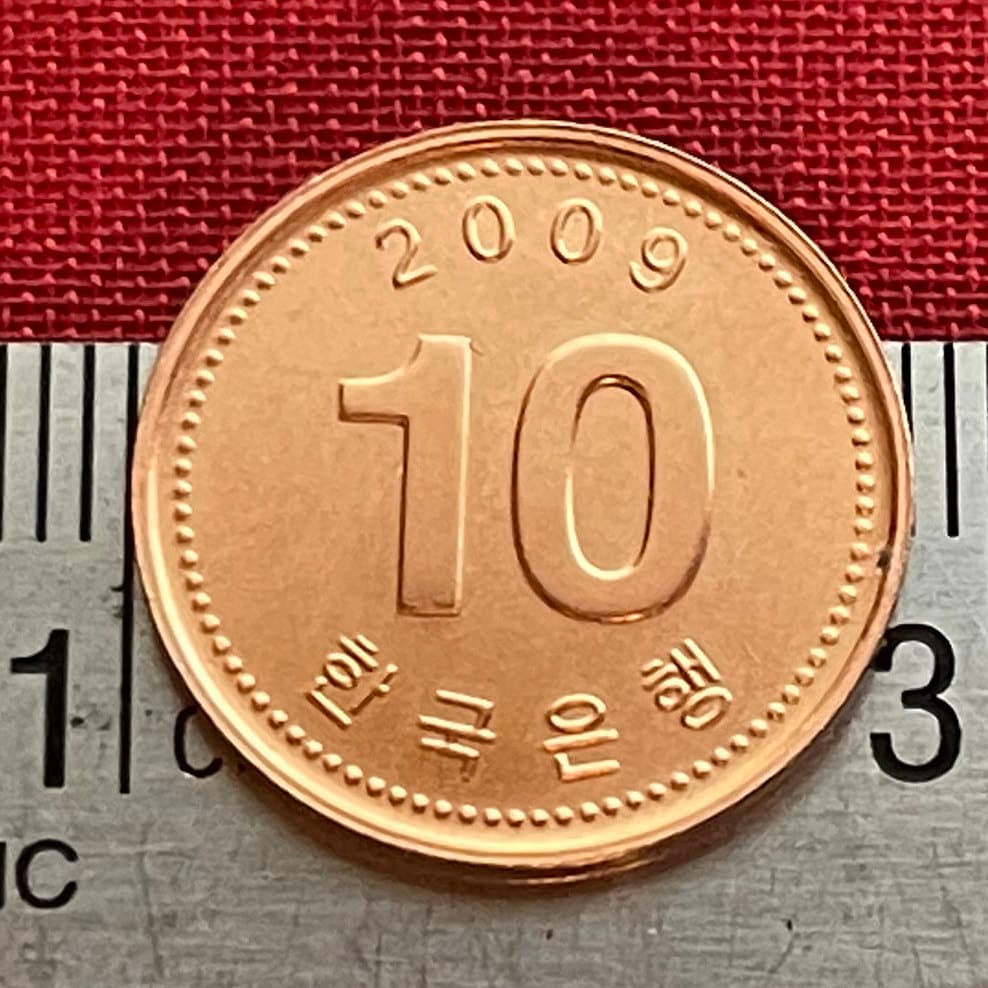
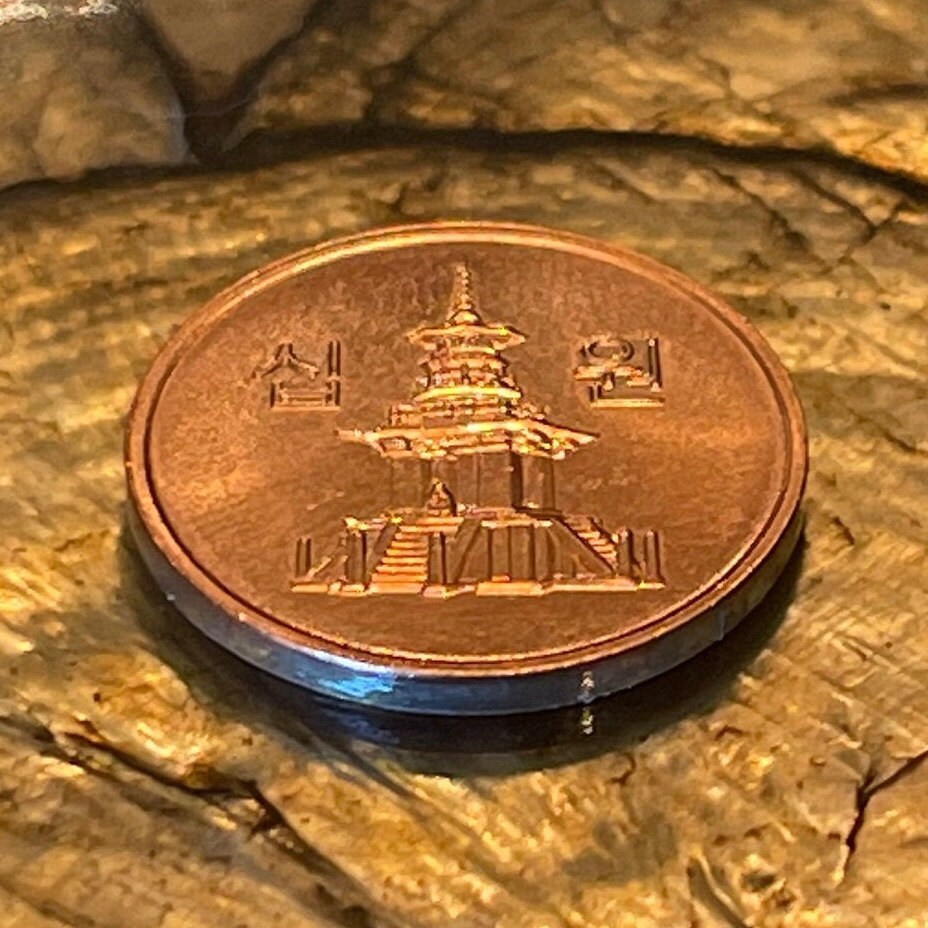
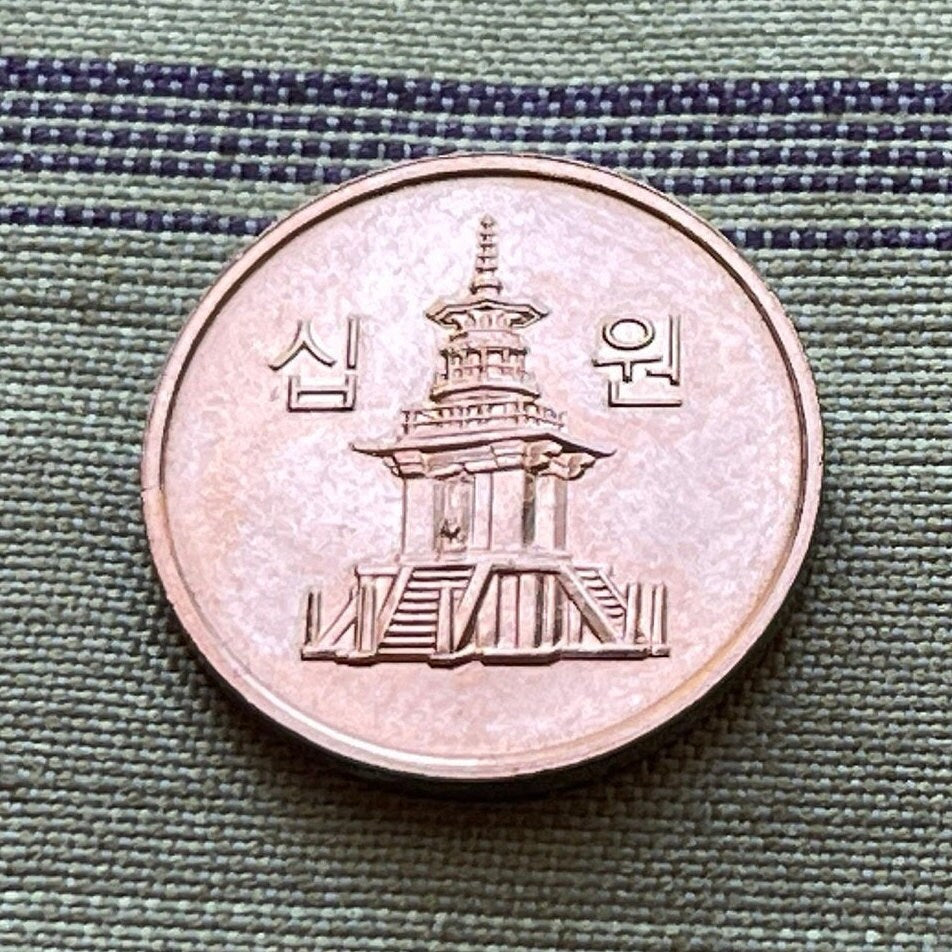
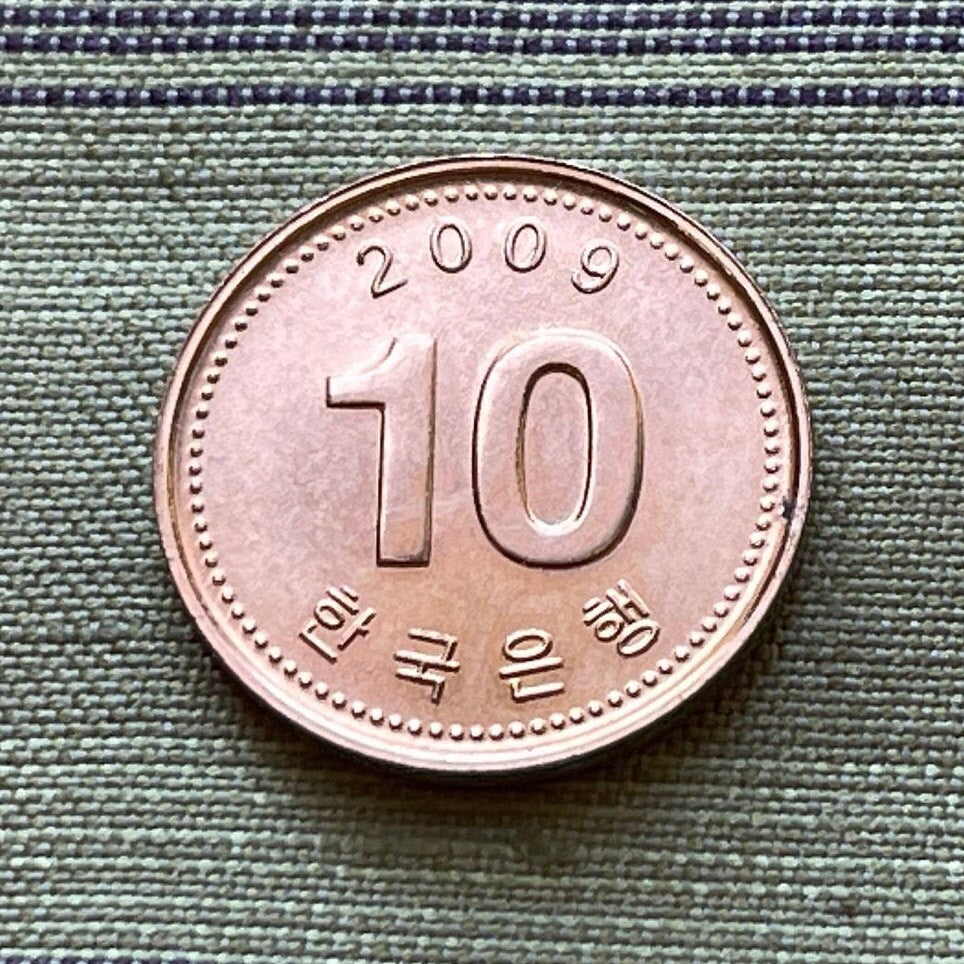
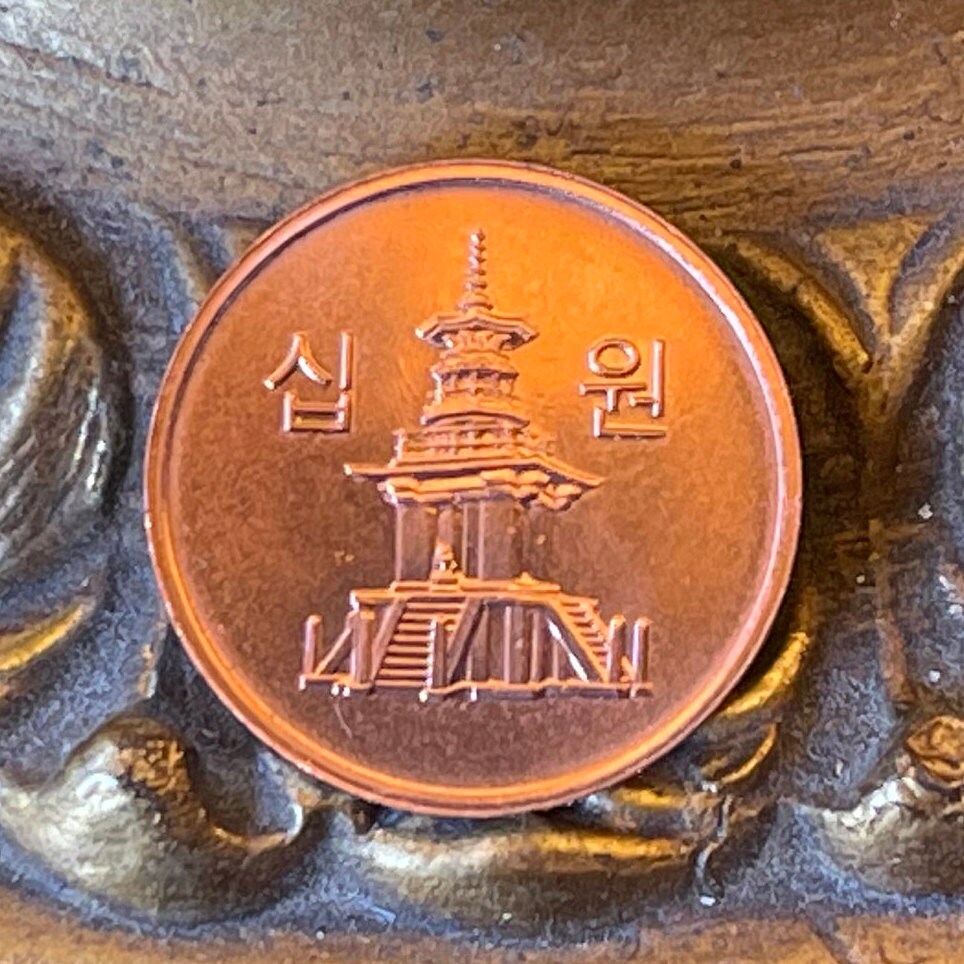
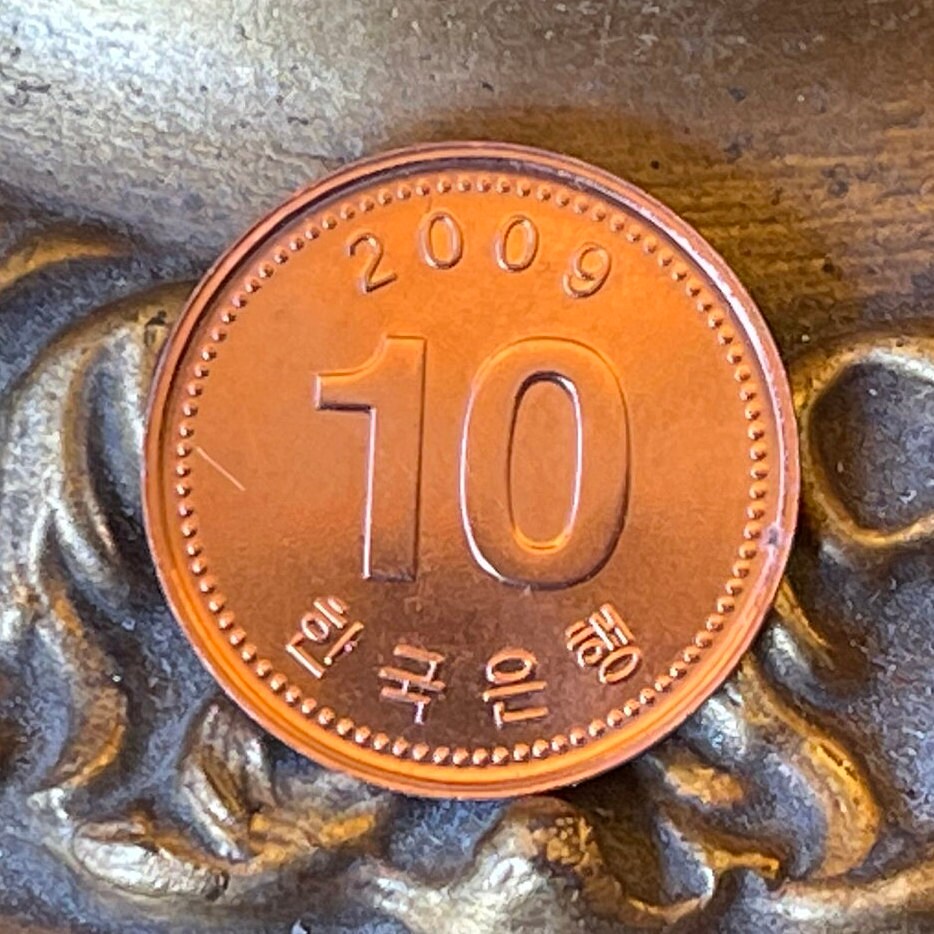
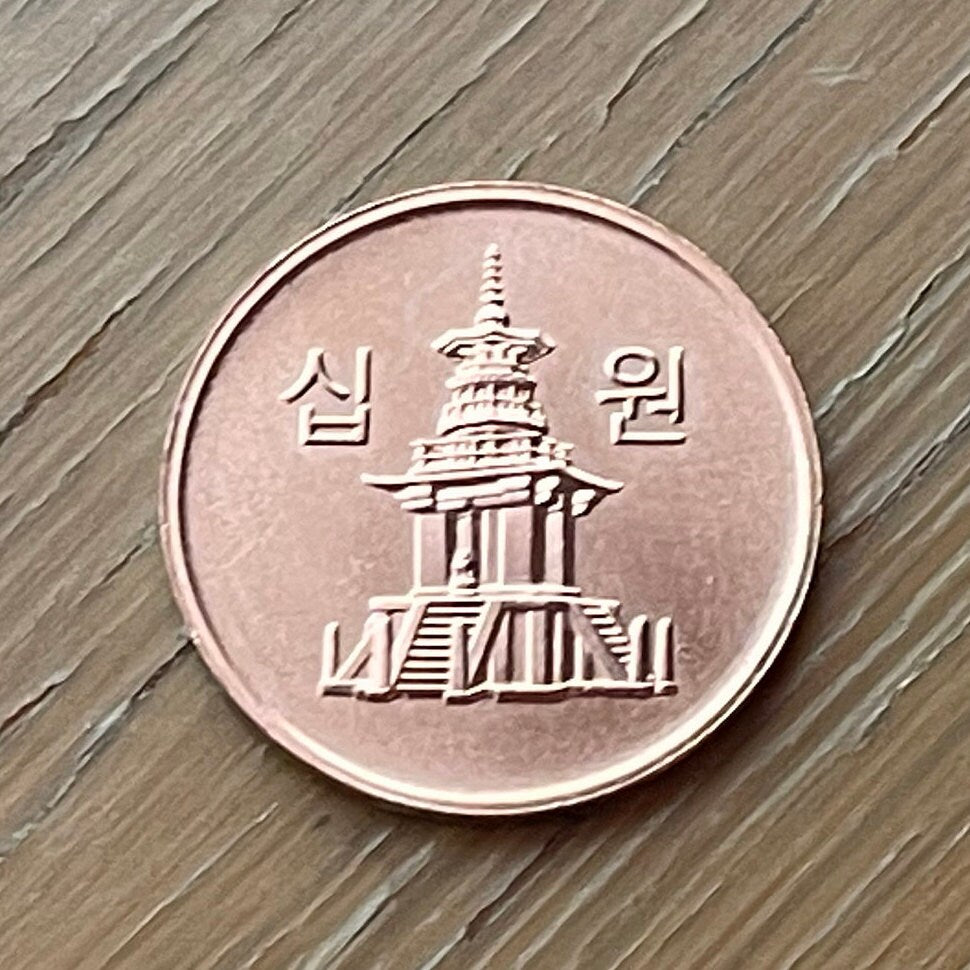
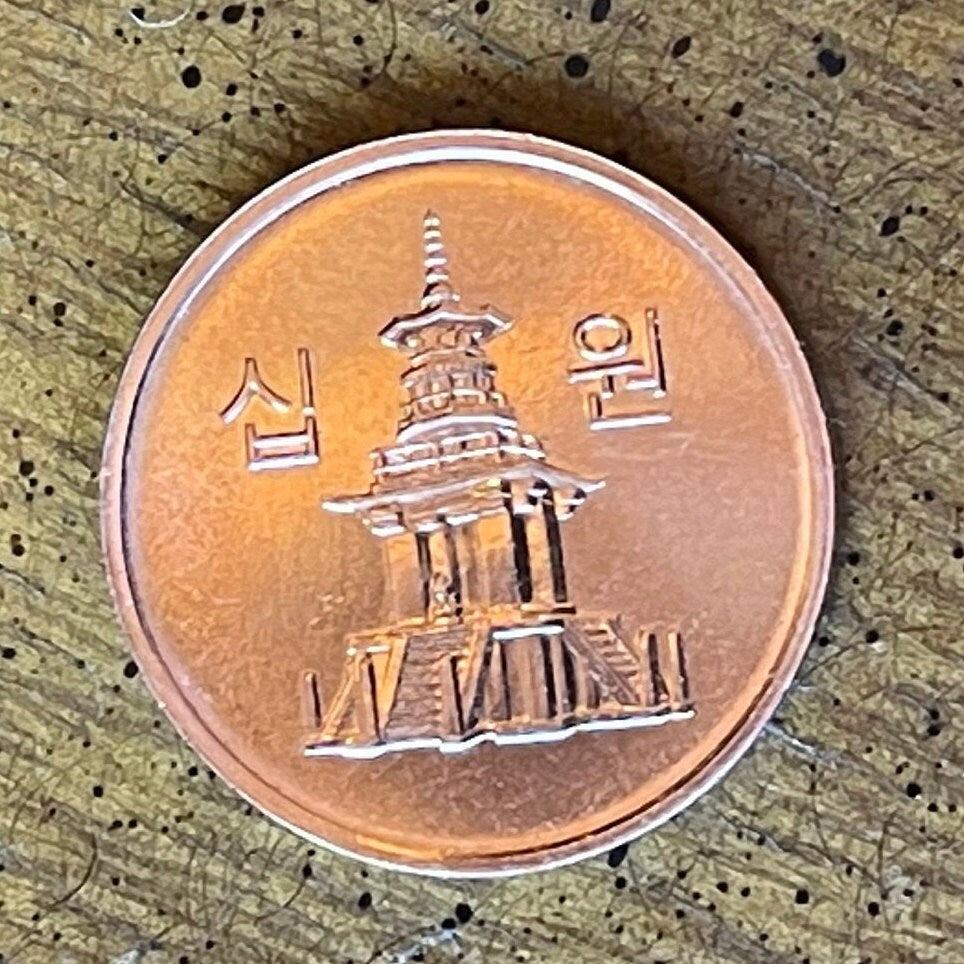
Absolutely beautiful I love it thank you so very much ❤️
Great coin;I love it.Thank you.
5 stars review from Cynthia








